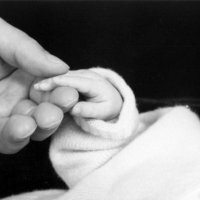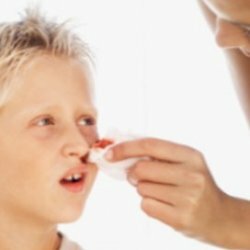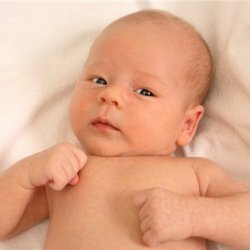Cerebral palsy

Because of child cerebral palsy( cerebral palsy), children are most often disabled, therefore, they are considered very serious diseases. However, this disease has a distinctive, positive trait, which is uncharacteristic for other neurological diseases - cerebral palsy has no tendency to complicate symptoms, and in some cases it is possible to achieve complete disappearance of symptoms. To do this, it is enough to start a full-fledged treatment of the diseaseThe fact is that brain damage, which leads to cerebral palsy, does not progress, but is in the same state unchanged for a long time.
Causes of cerebral palsy
Causes of cerebral palsy can be attributed to the main reasons for the development of cerebral palsy either at an early age( up to 1 year) or even in prenatal development. Identifying the cause of development is sometimes very difficult, but as a rule, after careful questioning of the parents, it is possible to identify various pathological conditions.
Other causes of cerebral palsy:
- if a woman smoked during pregnancy, the risk of developing increases;
- if there is chronic fetal hypoxia;
- intrauterine infections;
- severe gestosis;
- if during pregnancy the woman suffered from anemia;
- rapid delivery;
- premature delivery;
- if after birth the child has become supercooled( especially if it happened in the first hours of life);
- if during childbirth was asphyxia;
- if up to 1 year the child suffered an infectious disease of the nervous system.
CP is not inherited, since it does not belong to chromosomal diseases, so a person with cerebral palsy can give birth to a perfectly healthy child.
Symptoms of
Diagnosis of cerebral palsy is possible at an early age, until the child has reached the age of 3 years. In severe cases, cerebral palsy is diagnosed in infancy( in the first 3 months after birth).In each individual case, the manifestations and symptoms of this disease are different. Nevertheless, cerebral palsy has typical symptoms:
- , the presence of ataxia can be seen during simple movements - the coordination of the muscles is broken;
- muscular spasticity - tension or muscle spasm is observed, overtrained reflexes can still be observed;
- shuffling the feet;
- while walking the child does not come on the whole foot, but comes only on the sock;
- child can not keep his balance;
- muscle tone is constantly in too relaxed or too tense state;
- there is a shaky, uneven gait.
In some cases, cerebral palsy develops because of an earlier infectious brain disease. Most often the disease develops if at an early age the child underwent bacterial meningitis. If the child has a congenital disease, and even in severe form, then his body is either too strained or too relaxed. Moreover, there is an incorrect posture, the spine is curved, the lower jaw is defective, the head is small. All the symptoms of cerebral palsy as the child grows up, or remain unchanged, or strengthened.
Secondary symptoms and disorders are common among children with cerebral palsy: spasms, epilepsy, convulsions, speech disorders, learning disabilities, sensory disorders, the child lags behind in mental development. Another reason that can cause cerebral palsy is a severe psychological trauma or craniocerebral injury.
Treatment of
The disease itself is not cured, all treatment is usually aimed at improving the condition of the child. Treatment, first of all, is aimed at reducing clearly expressed neurological defects. This requires training of mental functions, as well as physical ones. To improve muscle function, usually appoint labor therapy and / or physiotherapy. If the treatment of cerebral palsy is initiated at an early stage, it will allow the child to learn to implement various tasks and actions, and also help to partially overcome the developmental defects. With the appointment of rational treatment, it can be achieved that a child with cerebral palsy learns to live a practically full life.
Potential therapies for paralysis:
- speech therapy. The purpose of this therapy is to teach the child to control the muscles in the oral cavity. Therapy will also help to cope with the articulation of sounds and the problems associated with chewing food;
- labor therapy and physiotherapy - strengthens the functions of the body, helps to take personal restrictions, which allows you to live a more or less independent life;
- drug treatment is aimed at relieving muscle spasms and pain and helps to control convulsions;
- wheelchair application;
- application of orthopedic devices;
- application of speech synthesizers and other communications;
- surgical intervention aimed at relaxation of stressed muscles and correction of anatomical defects.



